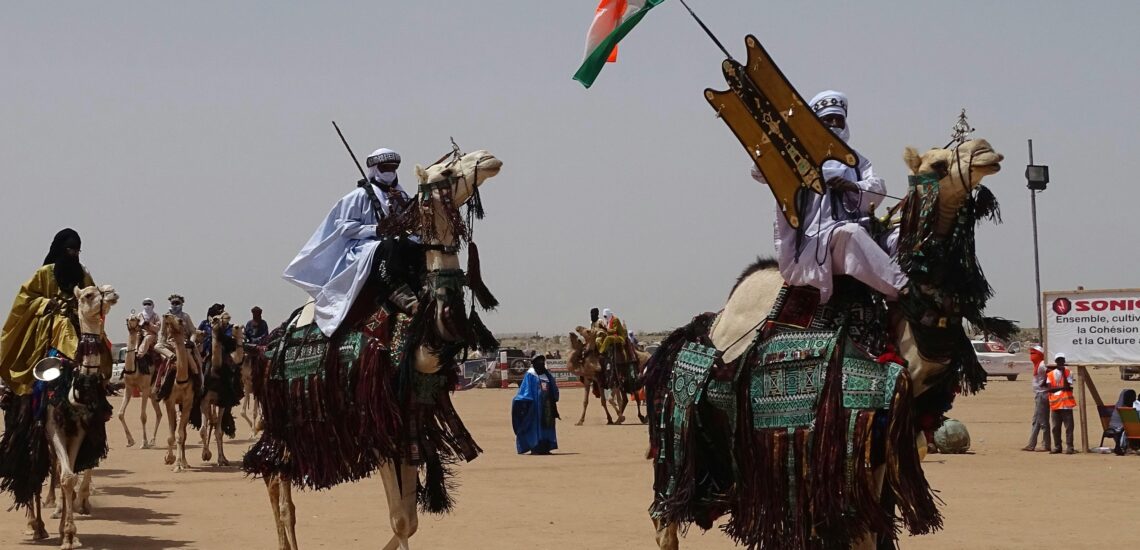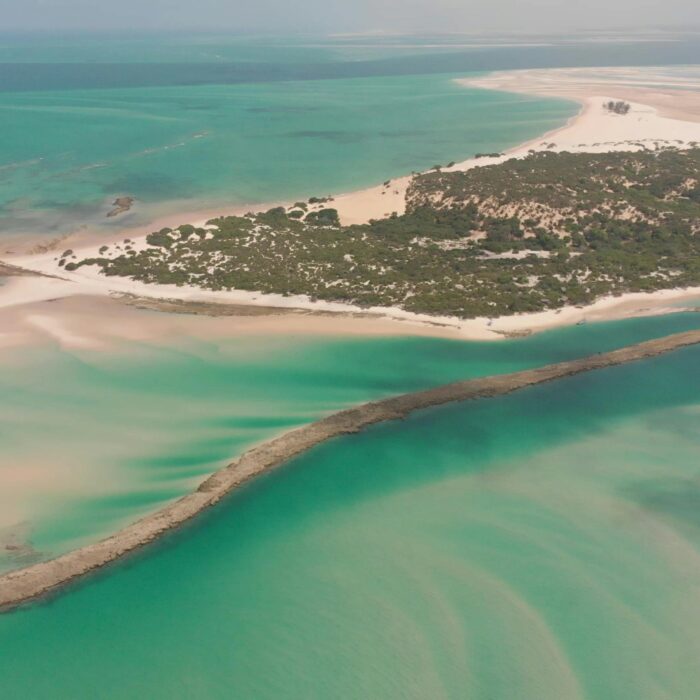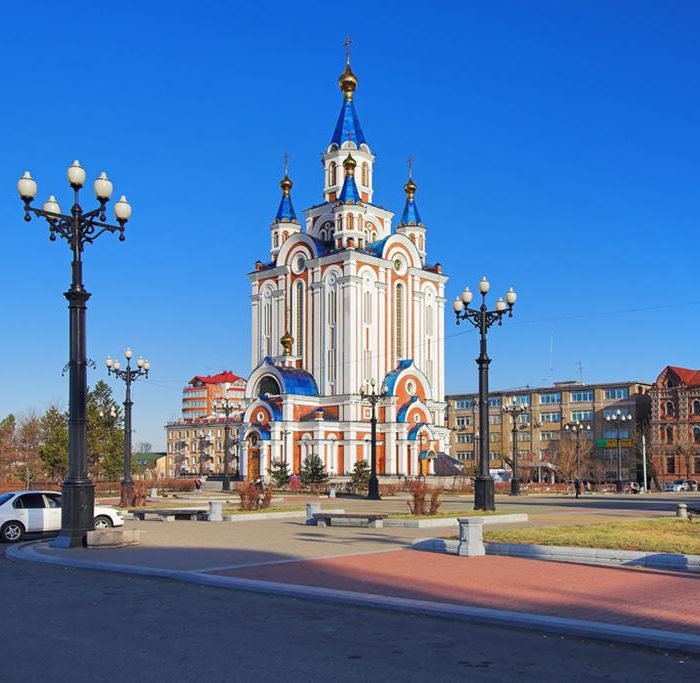Quick facts about Niger:
- Population: Approximately 27 million people.
- Capital: Niamey.
- Official Language: French.
- Other Languages: Hausa, Zarma, and several indigenous languages.
- Currency: West African CFA franc (XOF).
- Government: Semi-presidential republic.
- Major Religion: Islam (predominantly Sunni), with small Christian and indigenous belief communities.
- Geography: Landlocked country in West Africa, bordered by Libya to the northeast, Chad to the east, Nigeria to the south, Benin and Burkina Faso to the southwest, Mali to the west, and Algeria to the northwest. Niger’s landscape is largely desert, with the Sahara covering most of its northern region.
Fact 1: Much of Niger is covered by the Sahara Desert
Approximately two-thirds of Niger’s land area falls within the Sahara, making it one of the most arid countries in West Africa. The desert landscape dominates the northern regions, where vast sand dunes, rocky plateaus, and mountains are common. The Ténéré Desert, part of the larger Sahara, is located in Niger and is known for its extreme conditions and sparse vegetation.
The arid environment of northern Niger greatly influences the country’s climate, with high temperatures, minimal rainfall, and limited vegetation. Life in this region is challenging, and population density is extremely low. Most people in Niger live in the southern part of the country, where the land is more suitable for agriculture and where the Sahel region provides more temperate conditions for farming and livestock.
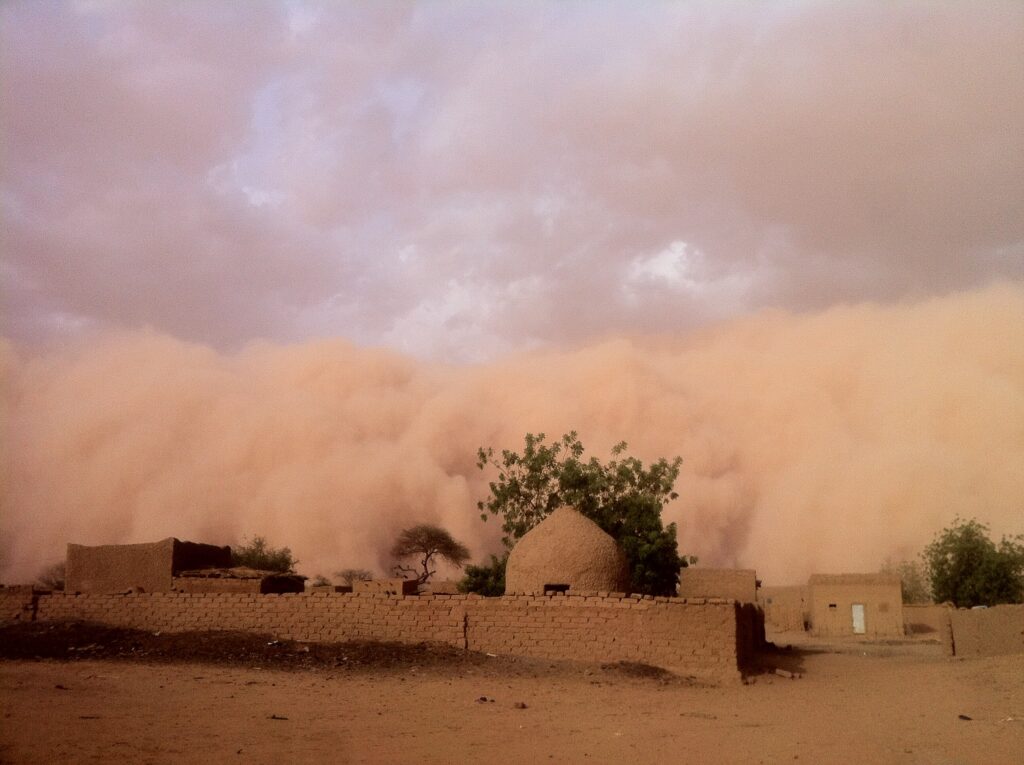
Fact 2: Niger is one of the poorest countries in the world
It consistently ranks low on the United Nations Human Development Index (HDI), with widespread poverty, limited infrastructure, and high dependency on agriculture, which is highly vulnerable to climate change. Over 40% of Niger’s population lives below the poverty line, and many face food insecurity due to frequent droughts, poor soil quality, and a rapidly growing population.
Niger’s economy is primarily based on subsistence agriculture, which employs the majority of its workforce but produces minimal economic growth. Additionally, political instability, security concerns from regional conflicts, and limited access to education and healthcare services exacerbate poverty levels.
Fact 3: Niger is the leader in birth rate
Niger has the highest birth rate in the world. The country’s birth rate is approximately 45-50 births per 1,000 people annually, and the fertility rate averages around 6.8-7 children per woman. This extremely high birth rate contributes to Niger’s rapid population growth, which poses challenges for the country’s resources.
The high birth rate in Niger is influenced by several factors, including cultural norms that value large families, limited access to family planning services, and low levels of education, particularly among women. As a result, Niger’s population is one of the youngest globally, with a median age of around 15 years.
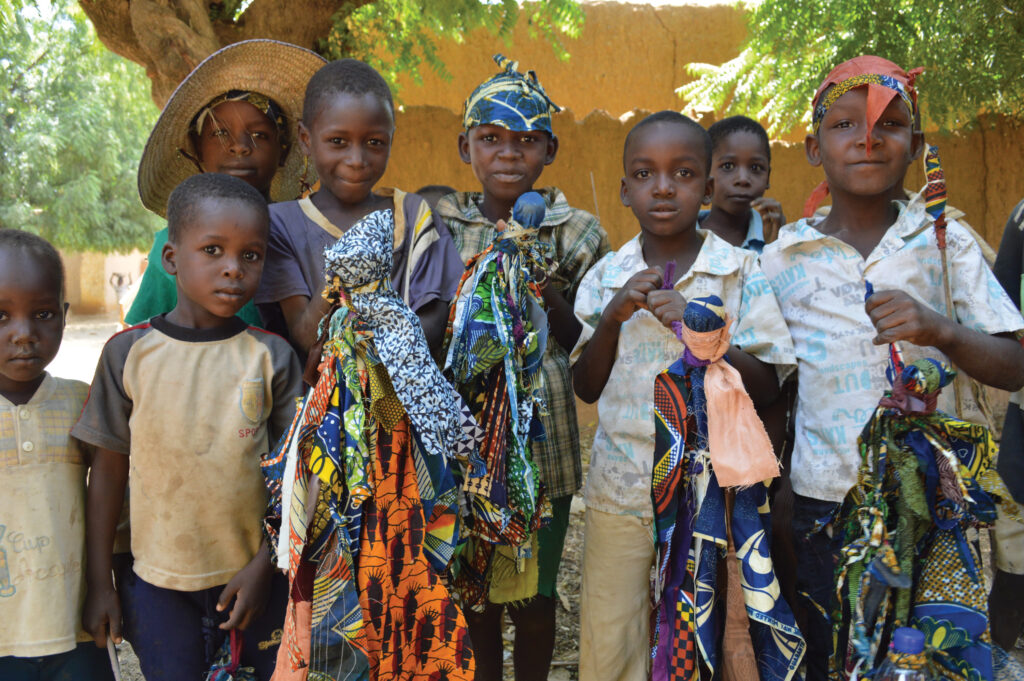
Fact 4: The Niger River is the third longest river in Africa and gave the country its name
Niger River is the third-longest river in Africa, stretching about 4,180 kilometers (2,600 miles) and flowing through multiple West African countries, including Guinea, Mali, Niger, Benin, and Nigeria. Only a portion of the river passes through Niger, primarily in the southwestern region, where it provides a crucial water source for agriculture, fishing, and transportation.
The river’s name is thought to have derived from the Berber word “gher n-gheren,” meaning “river of rivers.” The Niger River is essential to the economies and ecosystems of the countries it traverses, supporting diverse wildlife and serving as a vital resource for millions of people in West Africa.
Fact 5: The ancient city of Agadez in Niger is a UNESCO World Heritage Site
Agadez was inscribed on the World Heritage list in 2013, recognized for its historical significance and unique architecture. Located on the edge of the Sahara Desert, Agadez has been a major crossroads for trans-Saharan trade routes for centuries, linking West and North Africa.
The city is renowned for its distinct mudbrick architecture, particularly the Great Mosque of Agadez, which is the tallest adobe (mudbrick) structure in the world, standing about 27 meters high. This iconic minaret dates back to the 16th century and exemplifies the region’s Sudano-Sahelian architectural style. Agadez also contains many traditional homes and buildings that reflect the culture and history of the Tuareg people, who have inhabited the area for centuries.
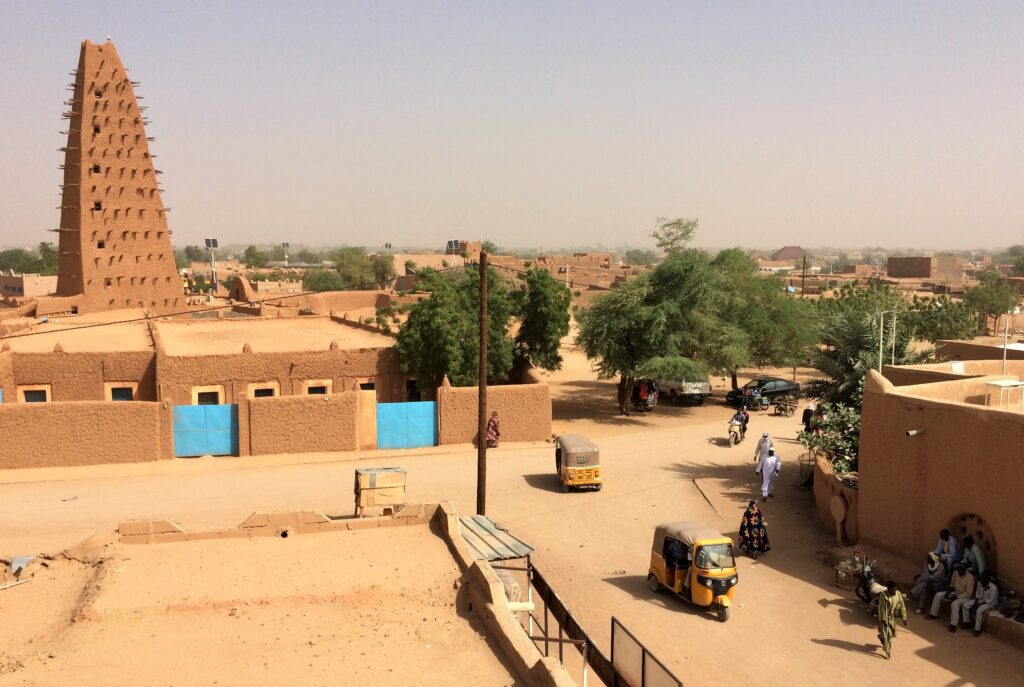
Fact 6: Niger is an active participant in the Great Green Wall project
The project, launched in 2007 by the African Union, envisions a “wall” of trees and vegetation stretching across the continent from Senegal in the west to Djibouti in the east, covering over 8,000 kilometers (5,000 miles).
Niger’s involvement in the Great Green Wall project is crucial, as the country faces significant challenges from desertification and soil degradation, which impact agriculture and livelihoods. The project in Niger includes reforestation, sustainable land management, and community-led efforts to restore degraded land. Farmers and local communities actively participate by planting trees, regenerating native vegetation, and adopting agroforestry practices to improve soil quality, increase agricultural productivity, and restore ecosystems.
Niger has made notable progress through “Farmer Managed Natural Regeneration” (FMNR), an innovative practice that encourages the regrowth of trees and shrubs on farmland. This approach has helped transform degraded landscapes, increased food security, and provided additional income for local populations.
Fact 7: One of the largest protected areas is in Niger
Niger is home to one of the largest protected areas in Africa, known as the Air and Ténéré Natural Reserves. Spanning approximately 77,360 square kilometers (about 29,870 square miles), this vast protected region is located in northern Niger, within the Sahara Desert. It was designated as a UNESCO World Heritage Site in 1991 due to its unique natural and cultural significance.
The Air and Ténéré Natural Reserves consist of two primary regions: the Air Mountains, a rugged range with peaks, valleys, and unique rock formations, and the Ténéré Desert, characterized by its expansive sand dunes and flat desert landscape. This area is one of the few places in the Sahara where rare and endangered species such as the addax, dama gazelle, and Barbary sheep still roam, as well as a variety of migratory birds.
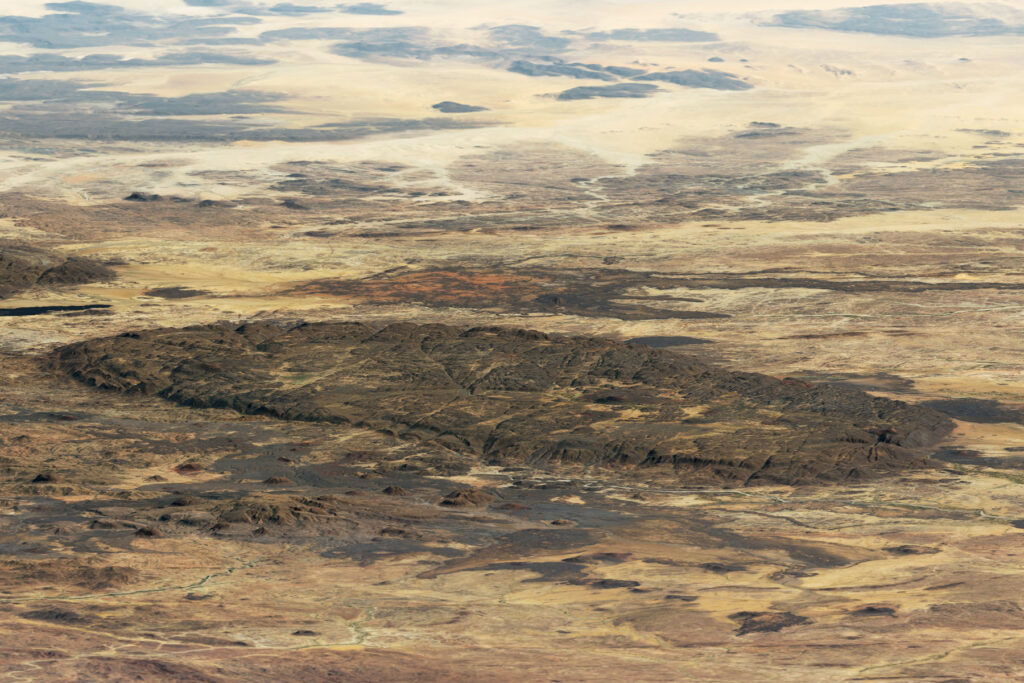
Fact 8: Niger has carved petroglyphs, unlike painted ones in other countries
Niger is renowned for its ancient carved petroglyphs, which are a unique feature compared to the painted rock art found in some other African countries. These petroglyphs, which date back thousands of years, are particularly concentrated in the Air Mountains and the Ténéré Desert areas, part of the UNESCO-listed Air and Ténéré Natural Reserves.
The petroglyphs in Niger depict a wide range of subjects, including animals like giraffes, elephants, and antelopes, as well as human figures and scenes of daily life. These carvings are significant because they provide a glimpse into the region’s past, indicating that the Sahara once had a much wetter climate, supporting abundant wildlife and human populations. The presence of now-extinct species in the petroglyphs, such as certain large mammals, underscores the environmental changes that have occurred over millennia.
Fact 9: Niger is hosting the Gerewol festival
Niger is home to the Gerewol festival, which is celebrated primarily by the Wodaabe people, a nomadic ethnic group in the region. The festival is known for its vibrant cultural expressions, including music, dance, and traditional ceremonies, and typically takes place annually during the rainy season.
The Gerewol festival is particularly famous for its courtship rituals, where young men dress in elaborate traditional attire and paint their faces with intricate designs to showcase their beauty and attract potential brides. The highlight of the festival includes dance competitions, where men perform elaborate dances to impress the women of the community.
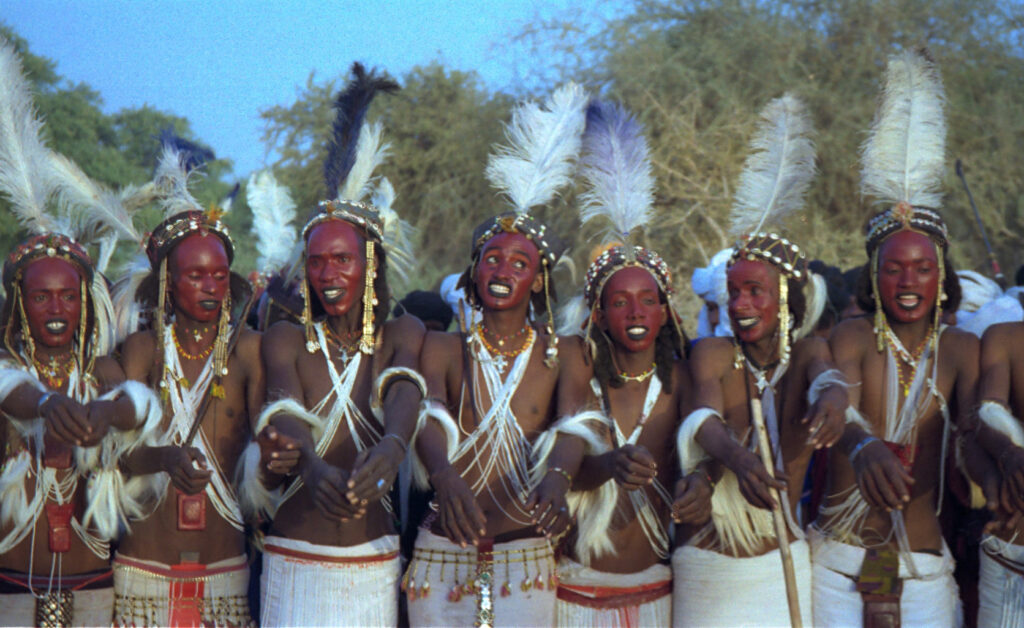
Fact 10: One of the dinosaurs is named after Niger
The name “Nigersaurus” translates to “Niger lizard,” reflecting its discovery in Niger. This dinosaur lived during the middle Cretaceous period, approximately 115 to 105 million years ago, and its remains were first discovered in the 1990s in the region known as the “Tenere Desert.”
Nigersaurus is particularly distinguished by its unique skull and dental structure. It had a long neck, a relatively small head, and an unusual array of over 500 replacement teeth adapted for a herbivorous diet. Its teeth were suited for browsing on low-lying vegetation, which suggests it may have fed on ferns and other plants close to the ground.

Published November 02, 2024 • 7m to read

